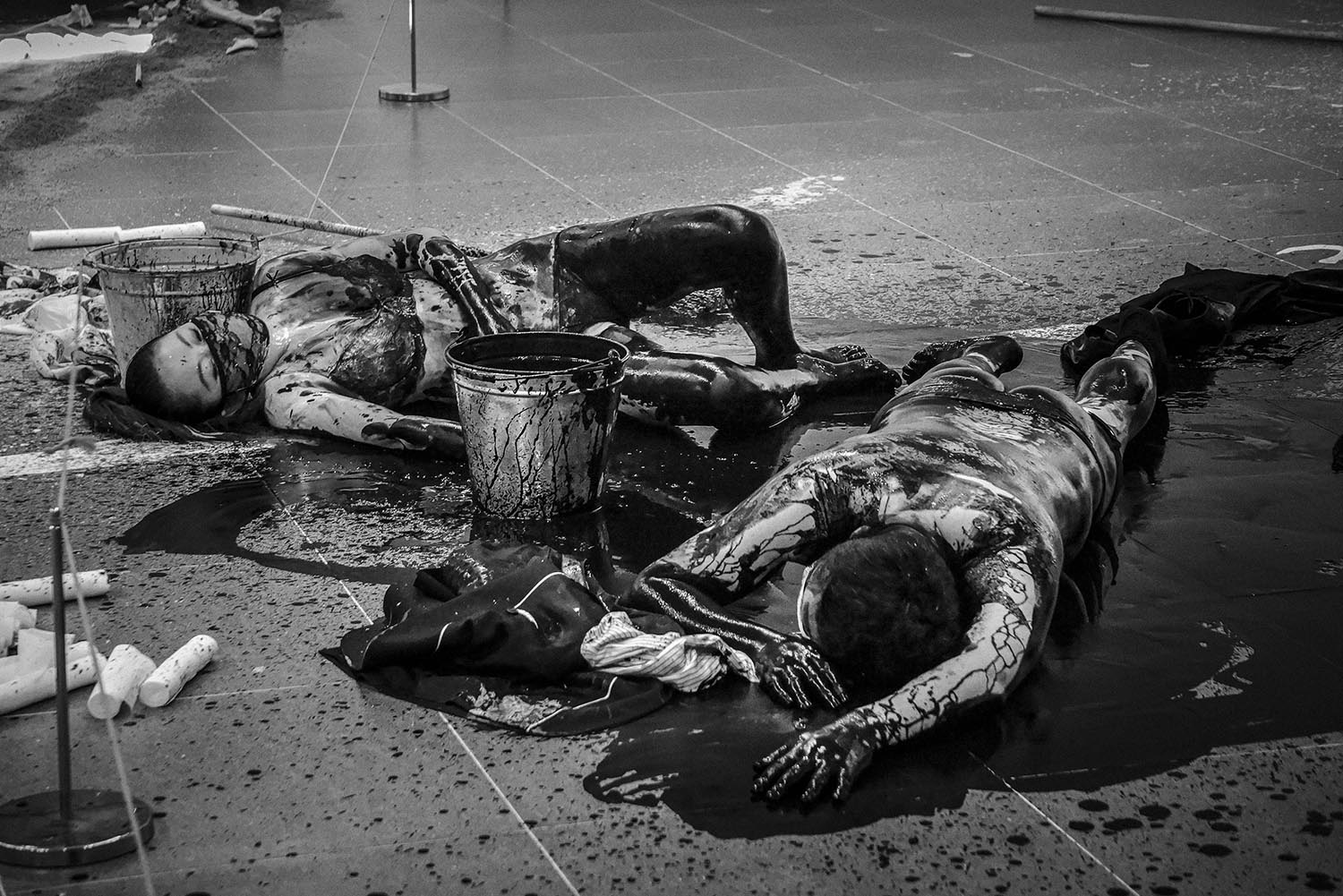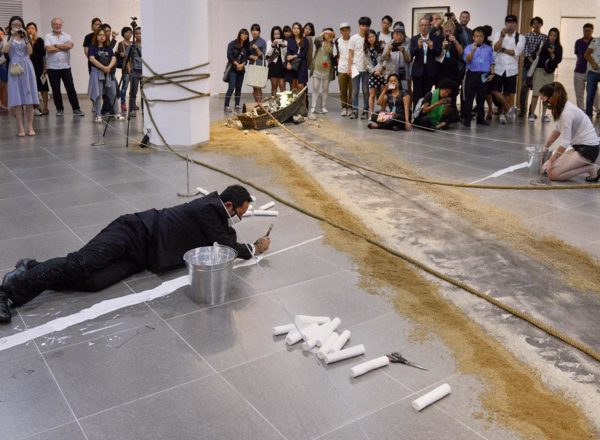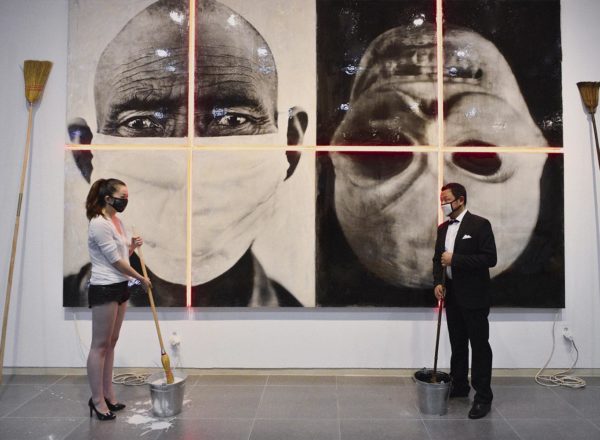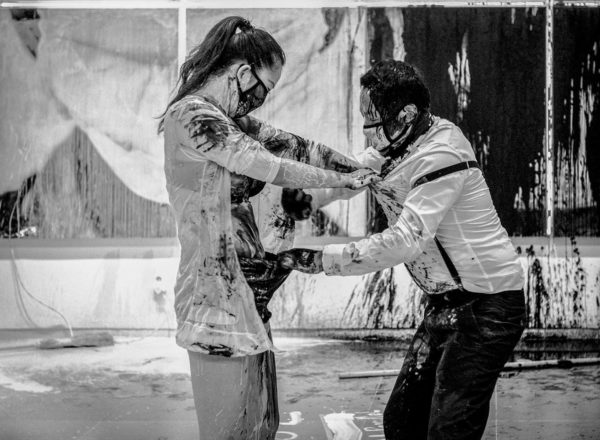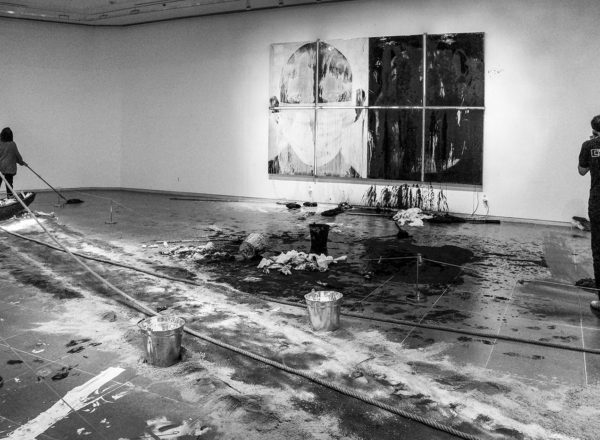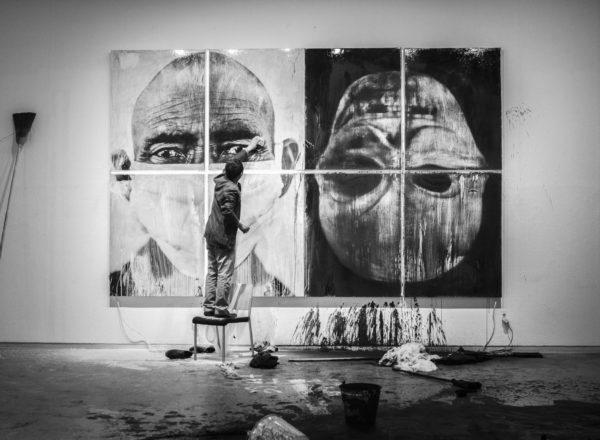In a performance which took place in Daegu, Korea in 2014, the artist and his co-performer, a young woman, anointed themselves (along with part of the gallery) with paint, black and white, and engaged in a frenetic and messy, mock coupling that subsided into expressions of mutual care and solicitude.
The stages of a ritual (coupling) was followed by an expression of collective care towards the end (including the wrapping of the participant’s bodies in cloth and paper)… in which the audience began to play a part. Indeed, the effervescence of ritual was in evidence in the clearly emotional response of many members of the audience; rather as if participants, than as detached on-lookers. Desire (eros) was perhaps transformed into love (agape), desperation into a kind of calm, a wound certainly transformed through a form of healing. The cathartic expression presupposed the expression for its catharsis. Indeed the apparently destructive, desperate, wild and orgiastic moments that connote sexual coupling, may be read as carrying the same general meaning as Euripides’ great play, The Bacchae, reminding us: do not forget you are still matter, organic, made of blood and desire… the nature of human, (even if the expression is always cultural). And the message perhaps is that expression is what is required, even at the risk of moments of apparent excess, if a new healthier state of stasis is to be achieved. Art is the barometer of expression. Performance art its ritual diagnosis. »
Dr.Peter Nesteruk 2016
